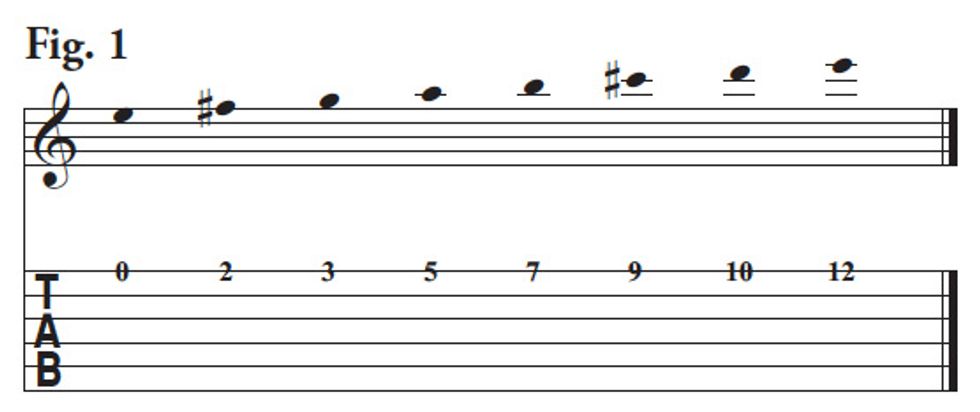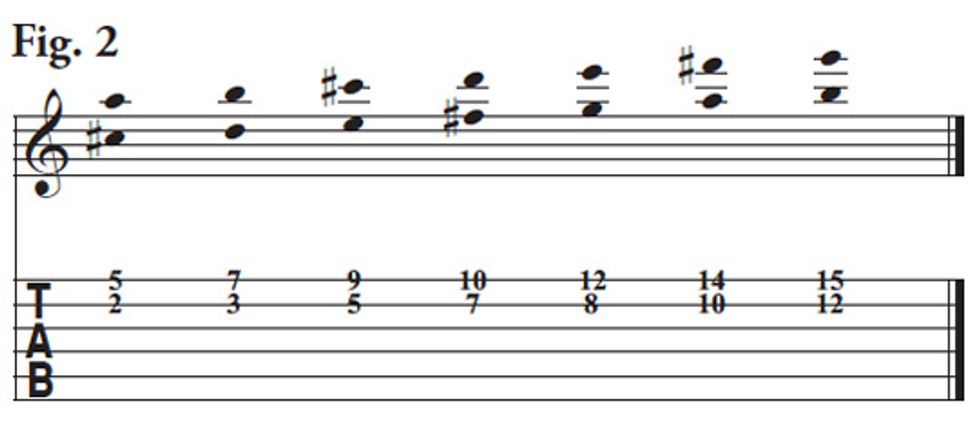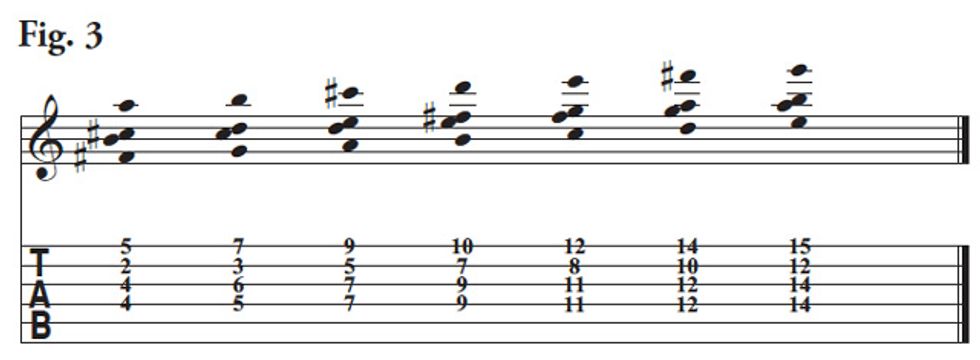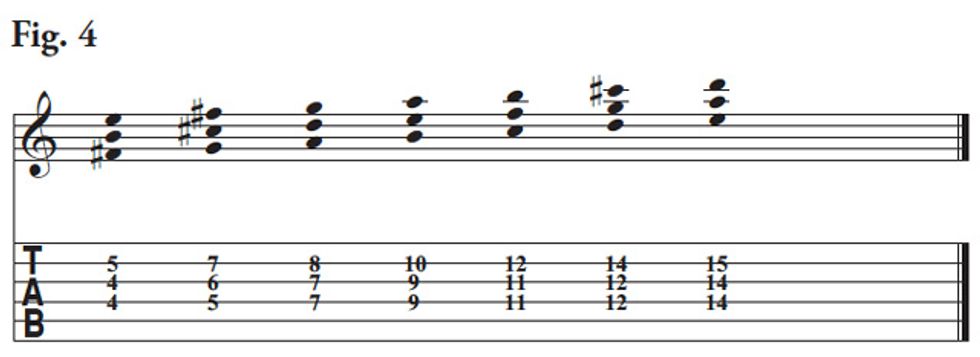I’d like to introduce you to a very useful way
to expand your chord vocabulary. The voicings
we are about to explore work really well
for comping and also for harmonizing melodies
in a bunch of different musical contexts. All
of the following examples are in E Dorian, so
you can use the low open-E string as a drone.
It is very helpful to be able to hear how each of
these chords fit harmonically within a key.
But before we get into the chords, let’s
take a look at the E Dorian scale. I tend to
think of this scale in one of three ways:
• As a D major scale starting on the
second degree (E).
• Following the formula for a
Dorian scale based off of E major
(1–2–b3–4–5–6–b7).
• Simply by the names of the notes:
E–F#–G–A–B–C#–D.
Personally, I tend to gravitate toward the
scale-degree formula. It simply makes it easier
to translate anything you work on into all
12 keys. We are going to think of an intervallic
structure as a combination of intervals
within a given scale. This structure can then
be sequenced through the entire scale, which
will result in seven different voicings. Sound
complicated? Let’s break it down:
In Fig. 1, you see the notes of an E
Dorian scale on the 1st string. Once you
have learned these E Dorian notes on the
1st string, take a few minutes and find the
same notes on the other five strings.
Next, we’ll try out some two-note intervals
(also known as double-stops). Let’s take the
interval of a sixth and move it through the
entire scale. In Fig. 2, I have shown how to
play these on the top two strings. Note that
when referring to intervallic structures we talk
in terms of diatonic intervals, so we will end
up with different qualities (major, minor, etc.).
In Fig. 3, I expanded this idea and added
two more notes to the voicings. I used the
sixth from the previous example and added a
fourth and a second. From low to high, this
voicing is based on a fourth, a second and a
sixth. Again, I move this structure through
the entire scale and, voilà, we now have seven
voicings that can work for E Dorian!
Download example audio... - Click here to hear the Fig. 3 chords used over an E minor groove...
Not all of the voicings in Fig. 3 are
complete Em7 voicings, some are a bit
ambiguous because they are missing the
3rd and/or the 7th, but that’s exactly the
point. They work perfectly in a modal context
and could be used more as a textural
device. Once the key center and mode is
established, we don’t have to constantly use
“descriptive” voicings. I always tell my students
“Don’t put a bagel on a bagel!”
You can also use your intervallic structures
for modes other than Dorian. Just be
aware, that some modes have an avoid note,
for example in Ionian you have to be careful
with voicings that contain the 4th. As
always, use your ear to judge what fits.
The most common intervallic structures
would be quartal harmony (also
known as 4th chords). These chords consist
of two stacked diatonic fourths. In
Fig. 4 you can see these chords on strings
4-3-2 in E Dorian. Download example audio...
What’s next?
• Learn one intervallic structure in
the seven modes derived from the
major scale.
• Move these around to all 12 keys.
• Apply the same concept to melodic
minor or other scales.
• Finally, put some rhythm to
these chords.
Every intervallic structure has its own
sound. Deciding which structures are suitable
for your style of playing is a matter
of personal taste. Once you’ve learned a
couple of different intervallic structures,
start mixing and matching them. This is
when it gets exciting—you will discover
an entirely new textural quality to that
good ol’ one-chord vamp!

Originally from Austria, fusion guitarist
Alex Machacek has a BA from the Berklee
College of Music and currently teaches
at the Guitar Institute of Technology in
Hollywood. His latest project is 24 Tales,
a duo album with drummer Marco
Minnemann. For more info visit alexmachacek.com

















![Rig Rundown: Russian Circles’ Mike Sullivan [2025]](https://www.premierguitar.com/media-library/youtube.jpg?id=62303631&width=1245&height=700&quality=70&coordinates=0%2C0%2C0%2C0)











